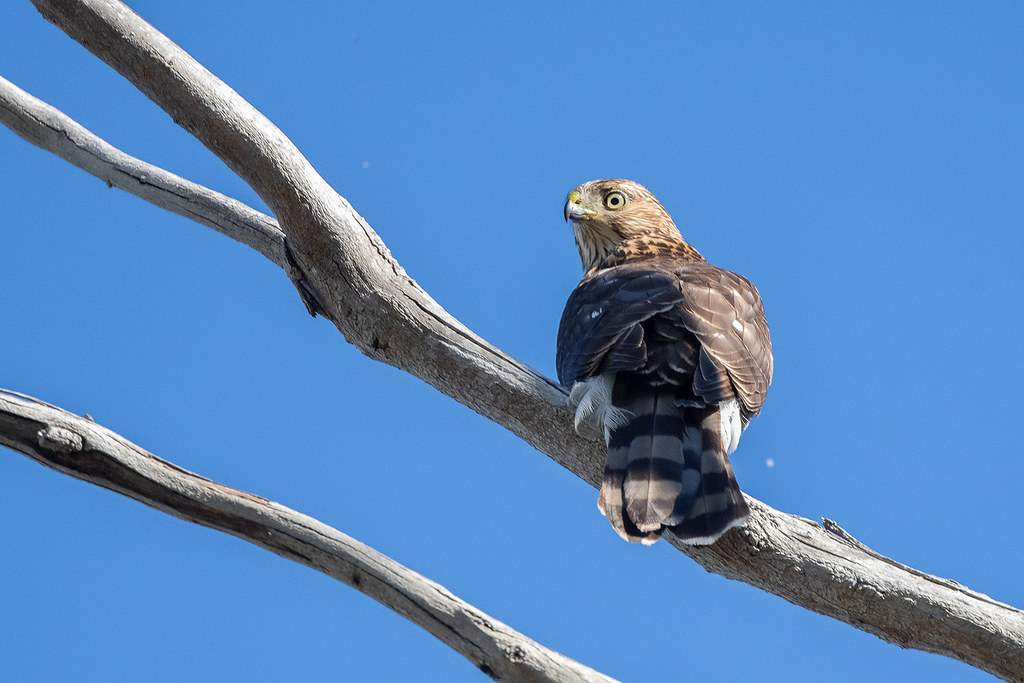
Rod Sorensen
-
Posts
418 -
Joined
-
Last visited
Content Type
Profiles
Forums
Blogs
Events
Downloads
Gallery
Store
Posts posted by Rod Sorensen
-
-
Tack sharp heron and I love the mood created by the background elements. Great image.
-
-
Flower App
in Nature
This seems like it might be one of those notable mistakes Edwin is referencing.-
 1
1
-
-
Perplexed
[ATTACH=full]1406414[/ATTACH]
Gary, Great textures, colors and composition on the tree trunk.
-
 1
1
-
-
-
-
[ATTACH=full]1396270[/ATTACH]
Large Milkweed Bug
Not to mention, aphids! A veritable explosion of colors.
-
-
-
-
I think it would be difficult to require everybody who posts to identify the species, but we can certainly suggest people to do so. In my case, if I post something unusual, as once in a while I visit some far corners of the earth to photograph, I would identify the species. But if it is something common around North America, e.g. great blue herons, great egrets, brown pelicans, etc. etc., I might not do so. I do aware that something very common to me is not necessarily common for someone who lives in a different continent.
On the other hand, if you have questions about any image, please feel free to ask for bird or animal ID. I find that most people here are more than happy to share.
Stay safe and happy holidays.
P.S. Years ago I was with a photo group from the US visiting Kangaroo Island in Australia. We saw a wallaby (essentially a smaller type of kangaroo) on road side. A few of us quickly set up 500mm lenses on tripods to photograph it. Some locals walked by and asked what we were doing. I am sure wallabies are like squirrels in the US. They thought us tourists were crazy and walked away.
I guess there are more people that DON’T share my sentiment. For me the photography and the learning go together. And I was thinking it would be something people could do voluntarily if they knew the species or wanted to learn it before posting. Some already do it. But I understand this is a photography forum and appreciate the reasons suggested for not doing this.
-
I would really like to know the species when pictures of wildlife, particularly birds, are posted.
I'm thinking there may be others that share my sentiment.
Happy holidays, all.
-
 1
1
-
-
Beautiful bird!
-
-
-
Short-eared owl at Buena Vista Grasslands, WI on 1/4.
Can’t claim to be overly excited by the image quality - combination of being fair distance away, right at or a little after sunset, fast motion and probably poor operator technique.
Nevertheless, these are beautiful, graceful and gregarious acrobats that are a joy to watch.
-
 5
5
-
-
-
-
This bird we are discussing certainly looks to me like it could be a Marbled Godwit. If that bird is common in the area where the image was taken and the Hudsonian would be uncommon to rare, why exactly are we still thinking that might be what it is? Maybe I'm too pragmatic or not wishful enough. This sort of reminds me of the eastern and western meadowlark. If you see a meadowlark in the eastern or western range, then you know which it is. If you are in the uncommon part where the ranges overlap, then it could be either and you can only positively identify by hearing the song. It seems like we are talking about a "western meadowlark in the west". I thinks it's a western. :)
-
Rod....I volunteer at Lady Bird Wildflower Center. I usually see a Roadrunner every day on Arboretum Trail.
Bill,
Was in Austin for a meeting in late October and visited LB for the first time. Great place that I hope to visit again. Thanks for your volunteer service.
I’m not sure what trail this was on, but it was in the area of the family garden. Must be a little habituated, because it wasn’t as skittish as roadrunners I’ve seen in the wild.
Rod
-
 1
1
-
-
-
A spideog- unrelated to North American variety . Our jays and goldfinches look different too I’ve learned!
Yes, indeed. I might have seemed ignorant, but I did know this was a European Robin. It is just interesting how different it looks (prettier than the American Robin in my opinion), and the fact that the two robins aren't even of the same genus.
-
[ATTACH=full]1304053[/ATTACH] Robin
Not anything like my Wisconsin, USA robins. :-)
-
Rod, the photos were taken without a telescope, simply a telephoto lens (600 mm equivalent) on a night (9/8/2012) when the moon and Jupiter were in close conjunction. Our moon is way too bright to get both it and and the image of Jupiter's moons in one shot. So the moon and Jupiter were shot separately and combined in PS. Details on the shot as follows:
Panasonic FZ200 at full zoom
Moon was shot at ISO 100 f/6.3 for 1/80 sec
Jupiter and its moons were shot at ISO 800, f/3.2 for 1/10 sec and I took 7 shots and stacked them in PS. The stacking is not necessary to see the moons but it helps to decrease the noise.
Thanks, Tom.















Monday in Nature 28 February 2022
in Nature
Posted
Common Redpoll